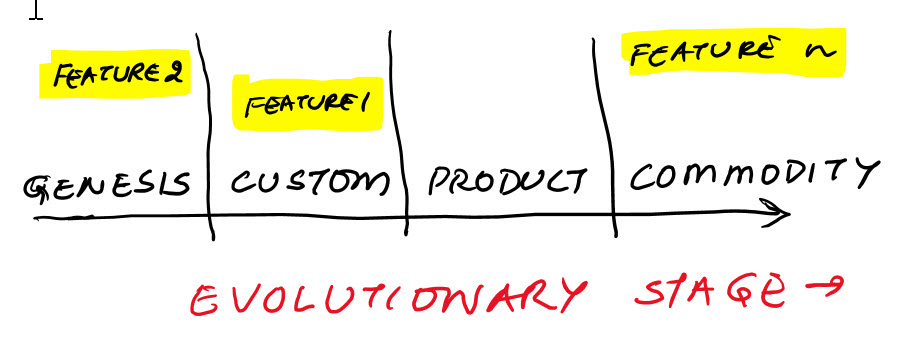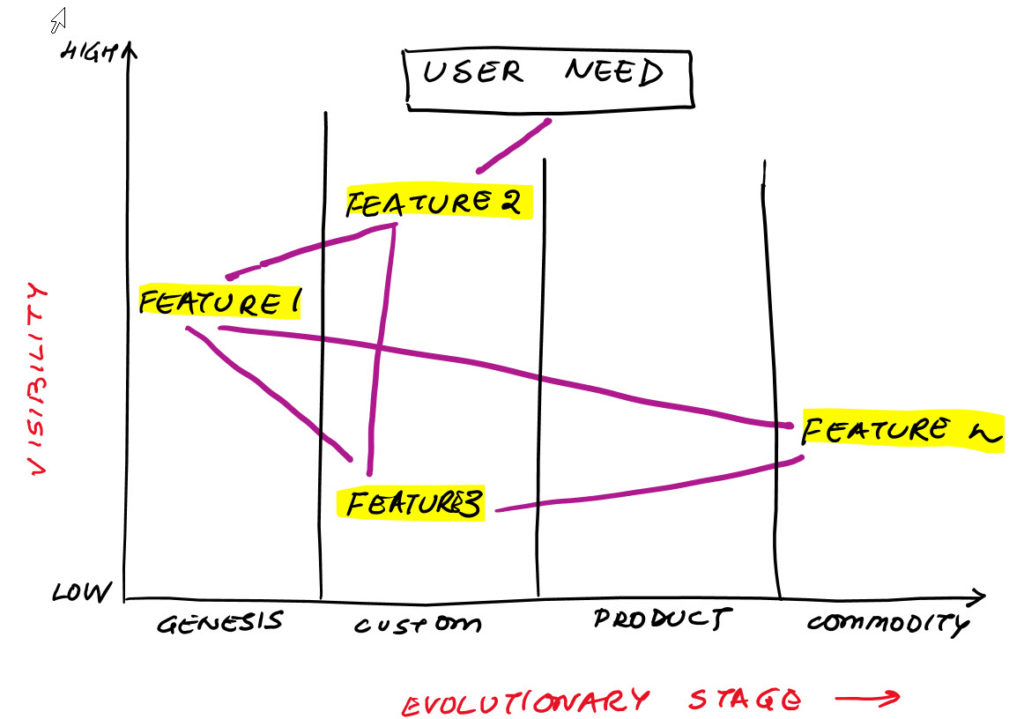I first heard of Wardley Mapping about 2 months ago and then the name started popping up in a few places which got us investigating it as a potential topic. Coming at it from zero knowledge, it seemed like the sort of thing product folks should know more about as it concerned both strategy & decision making.
Kim Ballestrin, Principal Consultant at elabor8, talked us through the basics and got us creating a map by thinking through the user needs capturing & protecting their personal data when using social media.
The What of Wardley Maps
A Wardley Map is a representation of the landscape & environment a company operates in. Its creator, Simon Wardley, believes a leader should have a map of the terrain to help guide their strategy.
The map consists of the activities the user needs to accomplish their goal charted across lifecycle, supply & demand.
You can use this framework in several ways, such as:
- To think about your ongoing product development – from USP to commodities
- A way of looking at the market or competitor landscape
- Process and value chains from understanding where you have no standard process to defining a highly standardised process
The Whys of Wardley Maps
The map is a great way to create discussion. Once created, scan your map from top to bottom and left to right to determine if there are specific decisions that need to be made. Look for assumptions you’re making on the map or within your existing thought process.
Bonus – The How of Wardley Maps!
There’s a few principles to keep in mind when creating a Wardley Map:
- The user need is your starting point
- Keep it simple and on a small scale – don’t try to map EVERYTHING!
- Your map will be imperfect – and that is completely ok!
How to create a Wardley Map
- Define your user’s needs.
- What are the activities the user takes in order for those needs to be met?
- Drill down into functions & features based on the visibility of the features to the end user.

Chart your functions & features from left to right along the evolutionary axes. The axes go from bespoke (genesis) on the left to generic (commodity) on the right.

Sketch in the linkages between the features & functions. This gives a good landscape of where you are right now.

Mapping out these connections and perhaps seeing where you may be too dominant in your commodity space & thus are at risk of disruption. Or understand that you’re too heavy in custom services, which bring high cost to serve & thus its time to consider streamlining the business by moving those to a product stage. These are some examples of ways a Wardley map helps you see the landscape and make better strategic decisions on what to do next as an organisation.
ProdAnon also had a bit of a surprise! The man himself, Simon Wardley, creator of this framework just happened to be in Melbourne Thursday evening and attended the session. Thank you Kim for inviting him!
Simon was kind enough to take some questions from the audience & talk through how he came up with his framework all those years ago.
Thank you to all the ProdAnon volunteers!! Ana Roy for fantastic note taking (& the great sketches!), Steve Cheah for the pix & elevator work and a these amazing people: Gwen D’souza, Marija Becker , Rob Finney, Richard Burke, Neha Jaiswal.
A massive thank you to DiUS for hosting the evening!

Thank you Kim for the talk & organising the surprise appearance by Simon!
Resources
Strategy for Executives – Situation Normal, Everything Must Change
Simon Wardley’s ‘Wardley Mapping‘ site
